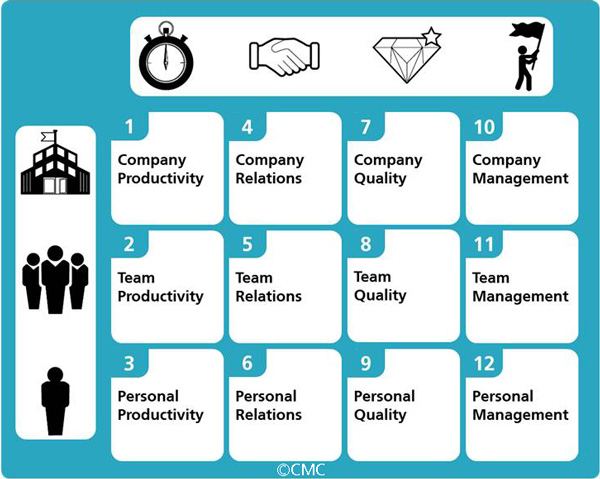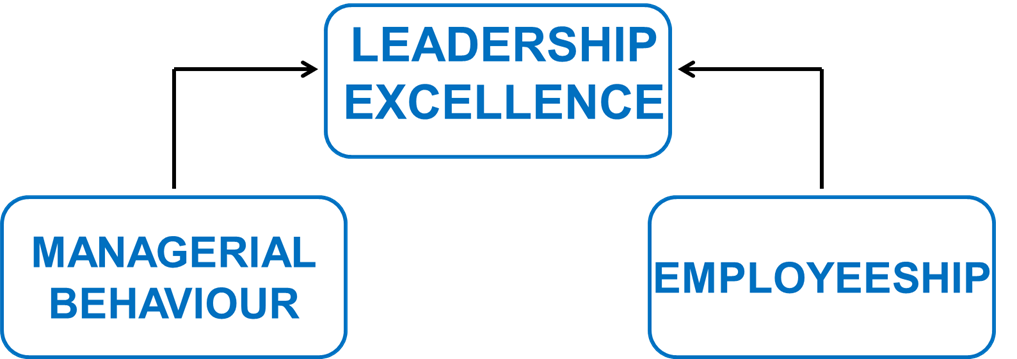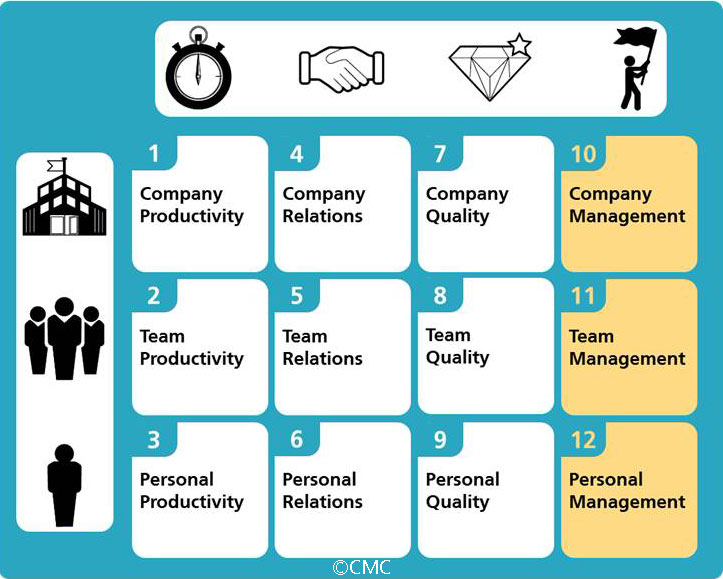Leadership Excellence (LE)

Leadership is not a fad but an evergreen concept essential for the survival and growth of any business.
Leadership Excellence has two components: Managerial Behaviour and Employeeship.

Managerial Behaviour
Even if management has been a topic for discussion since the creation of civilisation, a single universal definition of what management is does still not exist. Claus Møller defines management as a process – a movement from one situation to another desired situation in an acceptable way. Thus management is results-oriented and inseparably connected with change. Management is the interaction between people who want to attain mutual ends through mutual means. Thus management is exerted by people, individually or as a group, and the essence of management is the managerial behaviour of the individual.
There are three kinds of managerial behaviour:
- Goal-setting behavior: Reaching a mutual understanding of where we want to go together – our future desired state.
- Problem-solving behaviour: Identifying and eliminating the problems and obstacles on the way towards the goals.
- Communicating behaviour: Making sure that everyone involved share the same picture of ends and means, know their own roles and align their activities.
Managerial behaviour is an universal behaviour that can and should be made conscious, trained and developed.
Employeeship
When all employees bring out their best and are actively involved in the company’s quest for excellence, the company has a special culture which Claus Møller calls Employeeship. It is characterised by everyone’s commitment, responsibility, loyalty, initiative and positive energy. People displaying Employeeship exercise productivity behaviour, relationship behaviour and quality behaviour. When people display Employeeship they become employable!
Employeeship represents a unique participative approach to management.
The Management Process

The three management windows represent the managerial behaviour and Employeeship that any company needs to exercise. Leadership Excellence is achieved when a management process is established, i.e managerial behaviour and Employeeship are monitored and developed at all 3 levels.
The challenge for any company is to inspire all employees to contribute to a successful implementation of the management process.
This process is one of the four vital business processes to be established and maintained in any business.
Managerial problems
Companies face various kinds of problems, e.g., financial problems, technical problems, quality problems, marketing problems, IT problems, logistics problems. People are normally aware of these relatively tangible problems and have an idea of how to cope with them using their professional expertise, education, experience and skills.
People are normally less aware of the managerial problems which are often intangible and found more difficult to define and cope with. Sometimes people do not even recognise that a managerial problem exists.
A managerial problem exists when:
- People do not know where to go
- People know where to go but they don’t know how to get there
- People do not agree on ends and means
- People have not identified the real problem
- People do not share the same picture of the situation
- People do not know their own roles in the game
Many – if not all – major problems that organisations are confronted with can be traced back to the lack of understanding of the necessity of adopting managerial behaviour as a natural part of daily work life.
Being a manager is a ”non-professional profession” that should be learned and practiced by everyone who can influence the results of the organisation – including all formal managers.
If formal managers are not practising managerial behaviour, the organisation may be run but not managed!
No one would dream of allowing a person to fly a passenger aircraft without a flight certificate.
Never the less a lot of people are allowed to manage a team or even a whole organisation without a “management certificate”! And without knowing how to fly their company to a new desired destination.

What companies, teams and individuals gain from adopting the Leadership Excellence model?
What organisations gain from practising excellent leadership
Improved bottom line results through:
- Adopting the principles of participative management
- Creating an Employeeship culture
- Establishing guiding principles and practices that promote Employeeship
- Monitoring the Employeeship culture at all levels
- Teaching all managers management
- Adopting goal-setting behaviour at all levels
- Adopting problem-solving behaviour at all levels
- Adopting communicating behaviour at all levels
- Building a “team of teams”
What teams gain from managing their leadership excellence
Improved team results through:
- Adopting the principles of participative management
- Creating an Employeeship culture in the team
- Monitoring the Employeeship culture in the team
- Teaching all team members managerial behaviour and Employeeship
- Adopting goal-setting behaviour in the team
- Adopting problem-solving behaviour in the team
- Adopting communicating behaviour in the team
What individuals gain from enhancing their leadership skills
- Understanding that you need to manage yourself in order to manage others
- Achieving better results
- Enhancing self-esteem
- Being “employable
- Improving career opportunities
